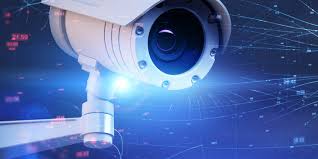The Impact of Surveillance Cameras on Public Safety
In recent years, surveillance cameras have become an increasingly common sight in public spaces around the world. These cameras serve as a tool for monitoring and recording activities in various locations, ranging from city streets to shopping malls to transportation hubs. The use of surveillance cameras raises important questions about privacy, security, and their overall impact on public safety.
Enhancing Security
One of the primary benefits of surveillance cameras is their ability to enhance security in public areas. By providing constant monitoring and recording of activities, these cameras can act as a deterrent to potential criminal behavior. In cases where crimes do occur, surveillance footage can be instrumental in identifying suspects and providing crucial evidence for law enforcement investigations.
Deterrent to Crime
Research has shown that the presence of surveillance cameras can act as a deterrent to crime. Criminals are less likely to engage in illegal activities in areas where they know they are being watched and recorded. This preventive effect can help reduce instances of theft, vandalism, and other crimes in public spaces, making communities safer for residents and visitors alike.
Protecting Privacy
While surveillance cameras play a vital role in enhancing public safety, concerns have been raised about their impact on individual privacy rights. It is essential for authorities and organizations deploying surveillance systems to establish clear guidelines for the collection, storage, and use of camera footage to ensure that privacy rights are respected.
Conclusion
Surveillance cameras have become an integral part of modern urban landscapes, providing valuable tools for enhancing public safety and security. While their presence may raise concerns about privacy issues, when used responsibly and ethically, surveillance cameras can contribute significantly to creating safer environments for everyone.
Top FAQs About Choosing and Using Surveillance Cameras
- What is the best camera for home security at night?
- What are surveillance cameras?
- What is the difference between a security camera and a surveillance camera?
- Do all surveillance cameras need Wi-Fi?
What is the best camera for home security at night?
When considering the best camera for home security at night, it is essential to prioritize features such as high-resolution night vision, motion detection capabilities, and infrared technology. Look for cameras with advanced low-light performance to ensure clear and detailed footage even in dark conditions. Additionally, consider cameras with built-in infrared LEDs that can illuminate the area without drawing attention to the camera itself. Choosing a camera that offers remote viewing and recording capabilities will provide added convenience and peace of mind for monitoring your home security at night.
What are surveillance cameras?
Surveillance cameras, also known as security cameras or CCTV (closed-circuit television) cameras, are devices used to monitor and record activities in specific areas. These cameras are typically installed in public spaces, businesses, homes, and other locations to enhance security and safety. Surveillance cameras come in various types, including analog and digital systems, with features such as motion detection, night vision, and remote viewing capabilities. The primary function of surveillance cameras is to provide continuous monitoring of an area to deter crime, identify suspects in case of incidents, and improve overall situational awareness.
What is the difference between a security camera and a surveillance camera?
When distinguishing between a security camera and a surveillance camera, it is essential to understand their primary functions. A security camera is typically designed for monitoring a specific area or property to detect and record any unauthorized activities or intrusions. On the other hand, a surveillance camera encompasses a broader scope of monitoring and may involve multiple cameras strategically placed to observe and analyze various activities in real-time. While both serve the purpose of enhancing safety and security, the key difference lies in the extent of coverage and monitoring capabilities each offers.
Do all surveillance cameras need Wi-Fi?
Many surveillance cameras do not necessarily require Wi-Fi connectivity to function effectively. While some modern cameras are designed to connect to Wi-Fi networks for remote monitoring and data transmission, there are also plenty of options available that can operate independently without the need for a Wi-Fi connection. These non-Wi-Fi cameras may use other methods of data transmission, such as wired connections or local storage solutions. The choice of whether a surveillance camera needs Wi-Fi ultimately depends on the specific requirements of the user and the intended use case for the camera.

